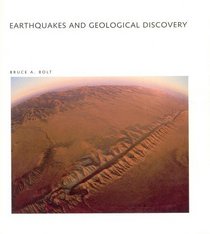Search -
Earthquakes and Geological Discovery
Earthquakes and Geological Discovery
Author:
Time and again we have seen the terrifying power and devastation of a great earthquake. It releases perhaps the most destructive and fearsome force of nature. But as scientists have learned, earthquakes are also one of nature's most informative events. The seismic waves that ultimately shake the surface carry with them evidence of the struct... more »
Author:
Time and again we have seen the terrifying power and devastation of a great earthquake. It releases perhaps the most destructive and fearsome force of nature. But as scientists have learned, earthquakes are also one of nature's most informative events. The seismic waves that ultimately shake the surface carry with them evidence of the struct... more »
ISBN-13: 9780716750406
ISBN-10: 0716750406
Publication Date: 5/1993
Pages: 229
Rating: 2
ISBN-10: 0716750406
Publication Date: 5/1993
Pages: 229
Rating: 2
4.8 stars, based on 2 ratings
Publisher: Scientific American Library
Book Type: Hardcover
Members Wishing: 0
Reviews: Amazon | Write a Review
Book Type: Hardcover
Members Wishing: 0
Reviews: Amazon | Write a Review
Genres:
- Science & Math >> Earth Sciences >> Earthquakes & Volcanoes
- Science & Math >> Earth Sciences >> Geology
- Science & Math >> Earth Sciences >> Seismology
- Engineering & Transportation >> Professional Science >> Earth Sciences >> Geology




